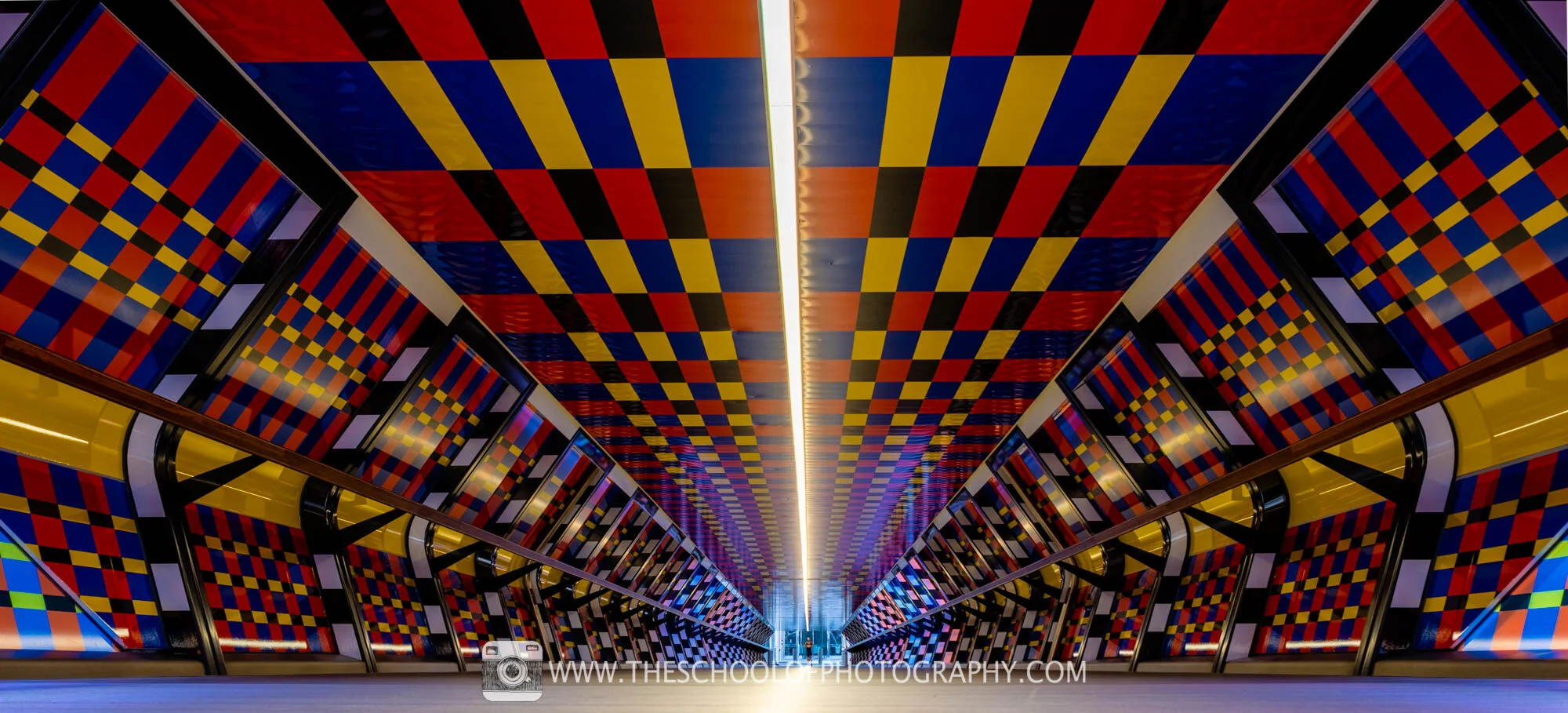Symmetry refers to any reflections across the image. A rigid motion of a geometric figure.
Composition 101 Symmetry Photolisticlife
There are many examples of symmetry both in nature and the manmade world which can be intriguing for a viewermirror-like reflections of a landscape on water being a common example.

. If we are very strict symmetry means that the two sides should be 100 identical. Symmetry has been understood and appreciated since ancient times. But in photography this is often not the case.
The definition of symmetry in photography is a visual balance between two halves of an image. How you can use Symmetry. Symmetry in photography creates a sense of harmony and visual cohesion where well structured composition produces an image displaying aesthetically pleasing proportion and balance.
Relying on how youre holding the digital camera and the way a lot of a scene you select to point out you may strengthen or weaken the symmetric properties of an object or scene. Think of your own body for a start says the guy with the slightly asymmetrical face. Symmetry Photography Composition.
One side is not overly cluttered compared to the other. Having strong composition and points of interest will help symmetry. Both sides of the image carry the same weight meaning the composition is evenly distributed.
Patterns appear whenever strong graphic elementslines colors shapes or formsrepeat. Symmetry is directly linked to balance and strength. Our minds like for things to be symmetrical because most things in nature appear that way such as our faces and bodies.
Symmetrical photography will show you how to add more depth vibrance and clarity to your images. Asymmetry is the opposite of symmetry which often places the subject of interest in the center. What is symmetry in photography.
The more symmetrical something is the simpler it becomes to process. Photo by Ryutaro Tsukata View Photo. Patterns both natural and man-made bring a sense of visual rhythm and harmony to photographs that like a series of repeating notes in a melody capture the imagination.
Balanced proportions also. A simple yet powerful example of vertical symmetry. Four Types of Symmetry in Photography 1.
Symmetry is the quality of an object to be split apart into two different parts by an axis with both parts being identical. Symmetrical photos are always pleasing and balanced. Symmetry is achieved when two almost identical halves of an image seem equal in balance and importance.
For example it is hard to find a perfect symmetrical balance in nature. At the stables at Keeneland just before the morning workout. One of the most common composition techniques to create symmetrical images is reflectional symmetry which refers to photos where one side of the composition is the mirror image of the other side.
This type of symmetry always features some sort of reflection so this can be a great way to. The creation of an image in which both sides either horizontal or vertical should look the same. But give it a try at least once especially if youre stuck in a photography rut.
Radial symmetry is the third most common form of symmetry we encounter in photography. It can also involve illusory reflections such as when you photograph an animal that has identical left and right sides. This is also known as formal balance or symmetrical balance.
This post is part of our Rules of Composition in Photography series. In asymmetrical photography these rules are inverted or even occasionally subverted. However this symmetry doesnt have to be literal in the sense of one half of an image exactly mirroring the other.
Correspondence in size shape and relative position of parts on opposite sides of a dividing line or median plane or about a center or axis compare bilateral symmetry radial symmetry. You can also achieve amazing results by exploring interesting ways to show symmetry in your subjects or finding a break in the symmetry. Symmetry is a strong device that allows you to mechanically create concord and a way of aesthetically pleasing balance and proportion in a photograph.
You dont have to pursue symmetry in photography your entire life. Your skills will improve and youll have fun trying to find symmetry in your surroundings. Symmetrical photographs may also leave empty space in the center and place two symmetrical subjects of interest on either side of the photograph.
Vertical symmetry is created when the left and right sides of an image reflect each other. Keeping your subject symmetrical is another good technique to use in photography. The property of being symmetrical especially.
The key to emphasizing patterns is to isolate them from their surroundings. Capturing elements in which there are repeating shapes lines or colors. Beauty of form arising from balanced proportions.
Consider that as a composition technique in photography you do not need exact symmetry in order to achieve noticable effects. Symmetry in photography composition is achieved when two halves of an image hold the same weight. The mind is pleased by natural order and the circular patterns found in splashes of water the human iris and flower petals star.
You can find vertical symmetry in anything from trees to radio towers and even in portraits. This can involve real reflections such as a subject looking in a mirror or a subject reflected on water. Even in our everyday photography we try to balance objects in the frame.
This definition is more of a mathematical definition. Reflections in lakes ponds or glass buildings can help you create symmetry in your photography. Symmetry The perfect example of balance is symmetry where one half topbottom leftright diagonal split of an image is identicalor nearly identicalto the other.
Like horizontal symmetry it adds a neatly composed feel to any photo.

7 Great Tips To Use Symmetry In Photography

What Is Symmetry In Photography How To Really Use It

Five Kinds Of Photography Balance You Need To Understand To Take Appealing Photographs Student Resources

Symmetry And Patterns Photography Composition Rules

Symmetry In Photography Killer Tips To Improve Composition The School Of Photography Courses Tutorials Books

Symmetry In Photography Killer Tips To Improve Composition The School Of Photography Courses Tutorials Books

How To Use Symmetry In Photography

Symmetry In Photography Killer Tips To Improve Composition The School Of Photography Courses Tutorials Books
0 comments
Post a Comment